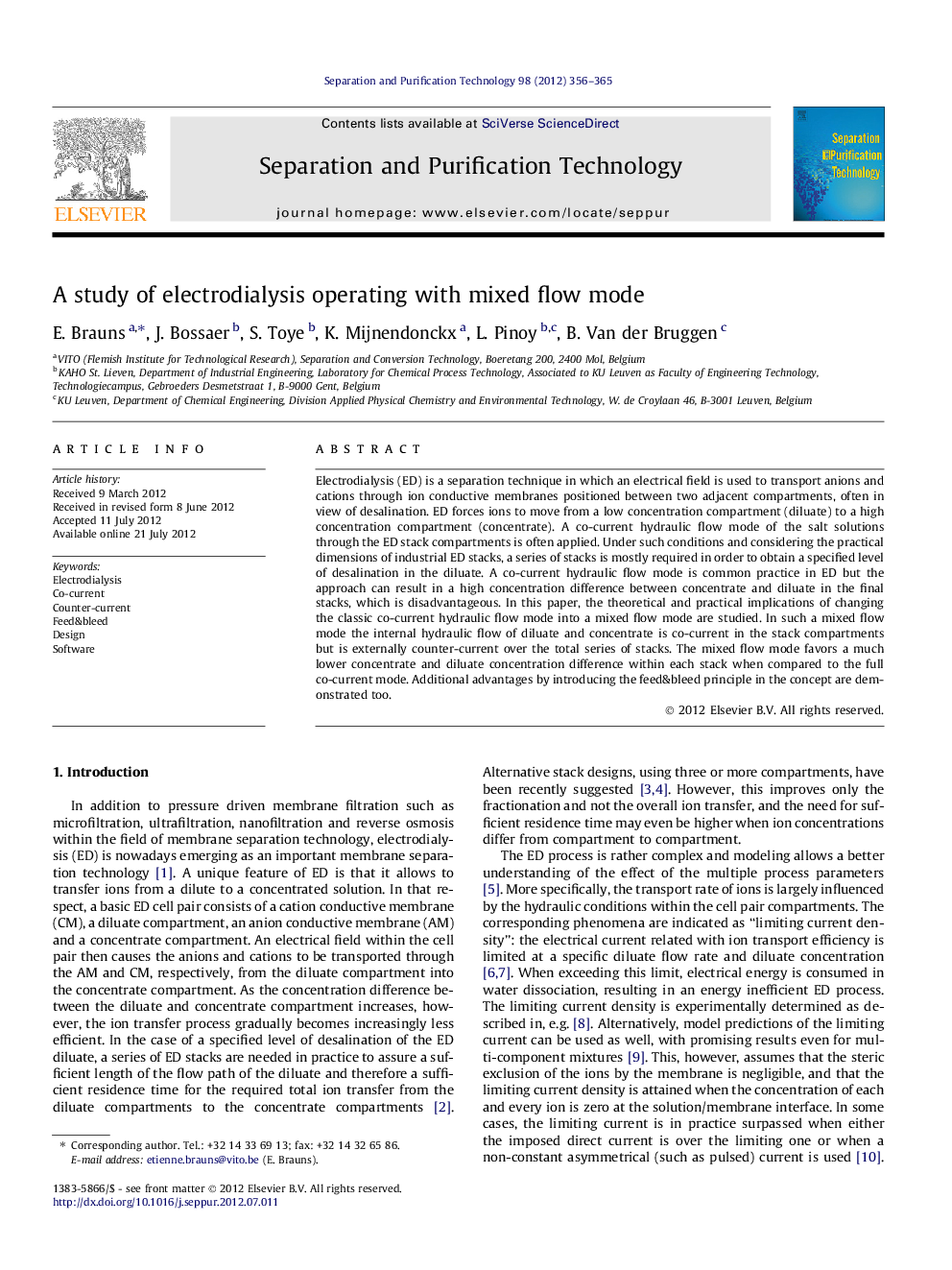| Article ID | Journal | Published Year | Pages | File Type |
|---|---|---|---|---|
| 642041 | Separation and Purification Technology | 2012 | 10 Pages |
Electrodialysis (ED) is a separation technique in which an electrical field is used to transport anions and cations through ion conductive membranes positioned between two adjacent compartments, often in view of desalination. ED forces ions to move from a low concentration compartment (diluate) to a high concentration compartment (concentrate). A co-current hydraulic flow mode of the salt solutions through the ED stack compartments is often applied. Under such conditions and considering the practical dimensions of industrial ED stacks, a series of stacks is mostly required in order to obtain a specified level of desalination in the diluate. A co-current hydraulic flow mode is common practice in ED but the approach can result in a high concentration difference between concentrate and diluate in the final stacks, which is disadvantageous. In this paper, the theoretical and practical implications of changing the classic co-current hydraulic flow mode into a mixed flow mode are studied. In such a mixed flow mode the internal hydraulic flow of diluate and concentrate is co-current in the stack compartments but is externally counter-current over the total series of stacks. The mixed flow mode favors a much lower concentrate and diluate concentration difference within each stack when compared to the full co-current mode. Additional advantages by introducing the feed&bleed principle in the concept are demonstrated too.
► Alternative concept of mixed co-current/counter-current electrodialysis mode set-up. ► Advantages are shown through mathematical modeling and experimental observation. ► The concept allows for a better cell flow and concentration polarization control. ► A concentrate at high concentration is feasible in multiple applications. ► The option of a closed process water cycle and zero waste disposal.
